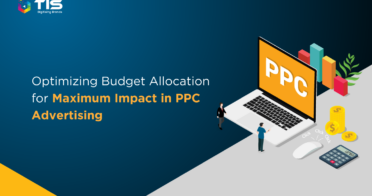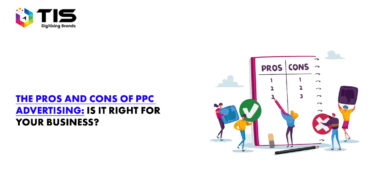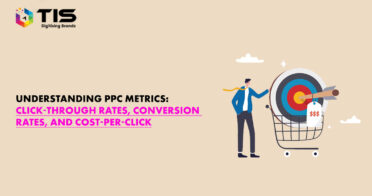





 Apr 14, 2023
Apr 14, 2023

Video ads are an increasingly popular format for social media PPC campaigns because they can effectively capture the attention of the target audience and convey the message in an engaging and memorable way. Here are some tips to create effective video ads for social media PPC campaigns:
Defining your target audience is a crucial step in creating effective video ads for your social media PPC campaigns. It involves identifying the specific group of people who are most likely to be interested in your product or service and tailoring your message and creative elements to resonate with them. This will help you maximize the impact of your video ad and increase the chances of it being viewed and engaged with by the right people.
To define your target audience, you can use a variety of tools and techniques. One of the most effective is social media demographics and analytics. Most social media platforms provide detailed information about their users, such as their age, gender, location, interests, and behavior. You can use this information to create a profile of your ideal customer, and then use it to guide the development of your video ad.
For example, if you’re selling athletic gear, you might want to target a younger audience that’s interested in sports and fitness. You can use social media demographics and analytics to determine the age range, gender, location, and interests of this audience, and then tailor your video ad to appeal to their specific interests and needs. You can use language, visuals, and messaging that speaks directly to this audience, making it more likely that they will engage with your ad and take the desired action, such as making a purchase or visiting your website.
Keep it short and sweet: The attention span of social media users is notoriously short, so when creating video ads for social media PPC campaigns, it’s important to keep them brief and to the point. A good rule of thumb is to aim for a length of 15-30 seconds. Within that time, it’s important to communicate your key message in a clear and concise way.
One effective way to grab your audience’s attention from the start is to use a strong hook. A hook is an attention-grabbing element that immediately captures the viewer’s attention and draws them into the video. This can be a bold statement, an intriguing question, or a stunning visual. The hook should be related to the key message of the ad and set the tone for the rest of the video.
By keeping your video ad short and starting with a strong hook, you increase the likelihood that your audience will watch the entire video and engage with your brand. This can lead to higher conversion rates and a more successful social media PPC campaign.
The principle of “show, don’t tell” is an essential aspect of creating effective video ads for social media PPC campaigns. Since video ads are a visual medium, it’s essential to focus on the visuals and animations rather than the text.
The reason for this is that people tend to remember things they see much better than things they read or hear. Therefore, by using visual elements such as images, graphics, and animations, you can create a more memorable and engaging video ad.
When creating your video ad, focus on using visuals to demonstrate the key benefits of your product or service. For example, if you’re promoting a new smartphone, you might show the phone in action, highlighting its sleek design, high-resolution screen, and powerful features. Rather than simply telling viewers about the phone’s features, you are showing them how it can enhance their lives.
It’s also important to keep text to a minimum in video ads. While you can use text overlays to provide additional information or to reinforce your message, it’s important to remember that people are unlikely to read large blocks of text while watching a video ad. Therefore, keep any text concise and to the point, and use visuals to convey your message wherever possible.
When creating an advertisement for a product or service, it is common to focus on the features of the product, such as its specifications or unique qualities. However, simply listing features may not effectively communicate the value of the product to the target audience. Instead, it is important to focus on the benefits that the product can offer to the audience.
Benefits refer to the positive outcomes that the audience can expect to experience from using the product or service. For example, if you are advertising a fitness tracker, the benefit may be improved health and fitness, rather than just highlighting the features such as the number of steps tracked or heart rate monitoring.
By highlighting the benefits, you are demonstrating to the audience how the product can solve their problems or improve their lives. This can be achieved by understanding the audience’s pain points and how the product can address them. For instance, if you are advertising a skincare product, you may want to focus on how it can help clear up acne or reduce the appearance of fine lines and wrinkles, as these are common concerns for many people.
Ultimately, highlighting the benefits of the product or service is crucial in making an emotional connection with the audience and convincing them to take action. By communicating how the product can improve their lives, you can create a sense of urgency and drive them to make a purchase or take the desired action.
A call-to-action (CTA) is a prompt that encourages the viewer to take a specific action after watching your video ad. This can be a crucial element of your video ad as it guides your audience towards the desired outcome and helps you achieve your marketing objectives.
To create an effective CTA, you need to be clear and specific about what you want the audience to do. This can include visiting your website, making a purchase, signing up for a newsletter, filling out a form, or calling a phone number. Use action-oriented language, such as “Shop now,” “Sign up today,” or “Learn more,” to motivate your audience to take action.
It’s important to place your CTA at the end of your video ad, so that it’s fresh in the viewer’s mind when they finish watching. You can also include a clickable link or button that takes the viewer directly to the desired destination, such as your website or landing page.
It’s a good idea to test different variations of your CTA to see which one resonates best with your target audience. You can use A/B testing to compare the effectiveness of different CTAs, and make adjustments based on the results.
Ultimately, the goal of your CTA is to convert viewers into customers, so it’s important to make it clear, compelling, and easy to follow through on.
Testing and optimizing your video ads is an important step in ensuring their effectiveness in your social media PPC campaigns. A/B testing, also known as split testing, is a technique where you create two different versions of your video ad and then run them simultaneously to see which one performs better. By comparing the results of the two versions, you can identify which elements of the video ad are working well and which ones need improvement.
To conduct A/B testing for your video ads, you need to define clear goals and metrics for measuring success, such as click-through rates, engagement rates, or conversion rates. Then, you can create two different versions of your video ad, with one variable changed in each version. For example, you might test different headlines, calls-to-action, or visual elements.
Once you have both versions of your video ad, you can run them simultaneously on your chosen social media platform and monitor their performance. It’s important to run the tests for a sufficient duration to collect enough data for analysis. You can then compare the results and identify which version performed better based on the chosen metric.
Based on the results, you can make adjustments to the underperforming version to improve its effectiveness. You can continue to iterate and test different versions until you find the most effective version of your video ad for your target audience and campaign goals. By testing and optimizing your video ads, you can improve their performance, reduce costs, and ultimately drive better results for your social media PPC campaigns.

In the dynamic realm of pay-per-click (PPC) advertising, the key to success doesn’t solely lie in the magnitude of your expenditures; it rests on the shrewd distribution of those funds to yield optimal outcomes. With the application of adept strategies, your budget can be stretched to its utmost potential,...
Read More

Overview of PPC Advertising PPC (Pay-Per-Click) advertising is an online advertising model where advertisers pay a fee each time their ad is clicked. It involves bidding on keywords and displaying ads in search engine results or on relevant websites. When a user clicks on the ad, the advertiser is...
Read More

Introduction: Pay-per-click (PPC) advertising is a powerful digital marketing strategy that requires a thorough understanding and analysis of key metrics to evaluate the effectiveness of your campaigns. This article focuses on three crucial metrics in PPC advertising: click-through rates (CTR), conversion rates, and cost-per-click (CPC). By gaining a comprehensive...
Read More